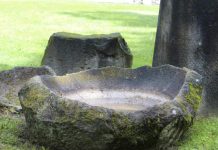Well, do you’ve any idea where is freshest Mushroom available? What do you think about exotic mushrooms being grown; probably your first answer will be in the forests, in basements, somewhere dark.
But here we’d like to inform you of one place in New South Wales, Australia, where you can find the freshest exotic mushrooms grown in a tunnel. Li Sun Exotic Mushrooms have been a long part of Australia’s history. In the start of the 19th century, the Great Southern Railway ran from Sydney to Picton.
However, resources such as marble, coal, sandstone, shale, timber, and farm produce were carried to Sydney through this railway. The Persons who also traveled through here and by the 2nd half of the 19th century; became a troublesome mode of transportation for all.
However, in 1863, the railway decided to extend southwards that included Mittagong, Bowral, Moss Vale, and Marulan. Thus in 1869, the railway was successfully completed with a massive distance of 224 kilometers, from Sydney to Goulburn. This is a tunnel that then needed to be made at the side of Mount Gibraltar, located between Mittagong and Bowral. However, it took two years to complete the excavation work.
Then in 1866, the single-line tunnel was completed, when the construction of double lines for the main Sydney to Melbourne line was completed in 1919, the original tunnel was abandoned. Therefore; in mid-1942 during WWII, the unused tunnel was used as storage for explosives by the Royal Australian Air Force.
Though after the war, stocks of explosives were slowly vacated from the tunnel. Then later in 1953, all stocks were cleared and the site was closed. In the post-war years, the abandoned tunnel became one of the first cultivated farms in Australia. In 1987, Dr. Noel Arrold took over the tunnel and produced new mushroom varieties for the Australian market.
The cool, damp, and dimly lit environment of the tunnel resemble well the mountainous of China, Japan, and Korea. Now, the tunnel grows some extensive varieties of exotic mushrooms such as
Chestnut: One of the oldest species of mushrooms cultivated by the Ancient Greeks.
Nameko: A very popular mushroom in Japanese cuisine, the name describes a sticky substance on the cap of the mushrooms which adds to the flavor.
Enoki: A traditional Japanese mushroom grown in bunches with long thin stems.
King Brown: A superior mushroom by comparison due to its long shelf life. It offers a superior flavor and texture when compared to other species of Oyster mushrooms.
Oyster: Mushrooms are fluted, oyster shell-shaped varieties found on rotting tree stumps and fallen trees. They are common throughout North America.
Shiitake: First cultivated in China about AD1100 and later introduced into Japan also known as Black Forest Mushroom.
Shimejii: A Japanese mushroom that grows from fallen oak, beech, or elm trees, there are many varieties but only one is cultivated in Australia at the moment.
Swiss brown: One of the most widely cultivated mushrooms; they are the strongest, richest, and most robust of the white and brown mushrooms.
Woodear Mushrooms: An essential ingredient in Asian cooking, this mushroom provides a texture contrast and is ideal in soups.
In recent times, new methods of cultivation of mushrooms have been industrialized which require more specialized environmental controls so these mushrooms are grown in climate controlled cropping rooms.
If you’re interested to view the tunnel itself, you can book tours that are conducted three to four times a year. Just visit Li Sun Exotic Mushrooms Tunnel’s website for further details. Source: Li-Sunexoticmushrooms












